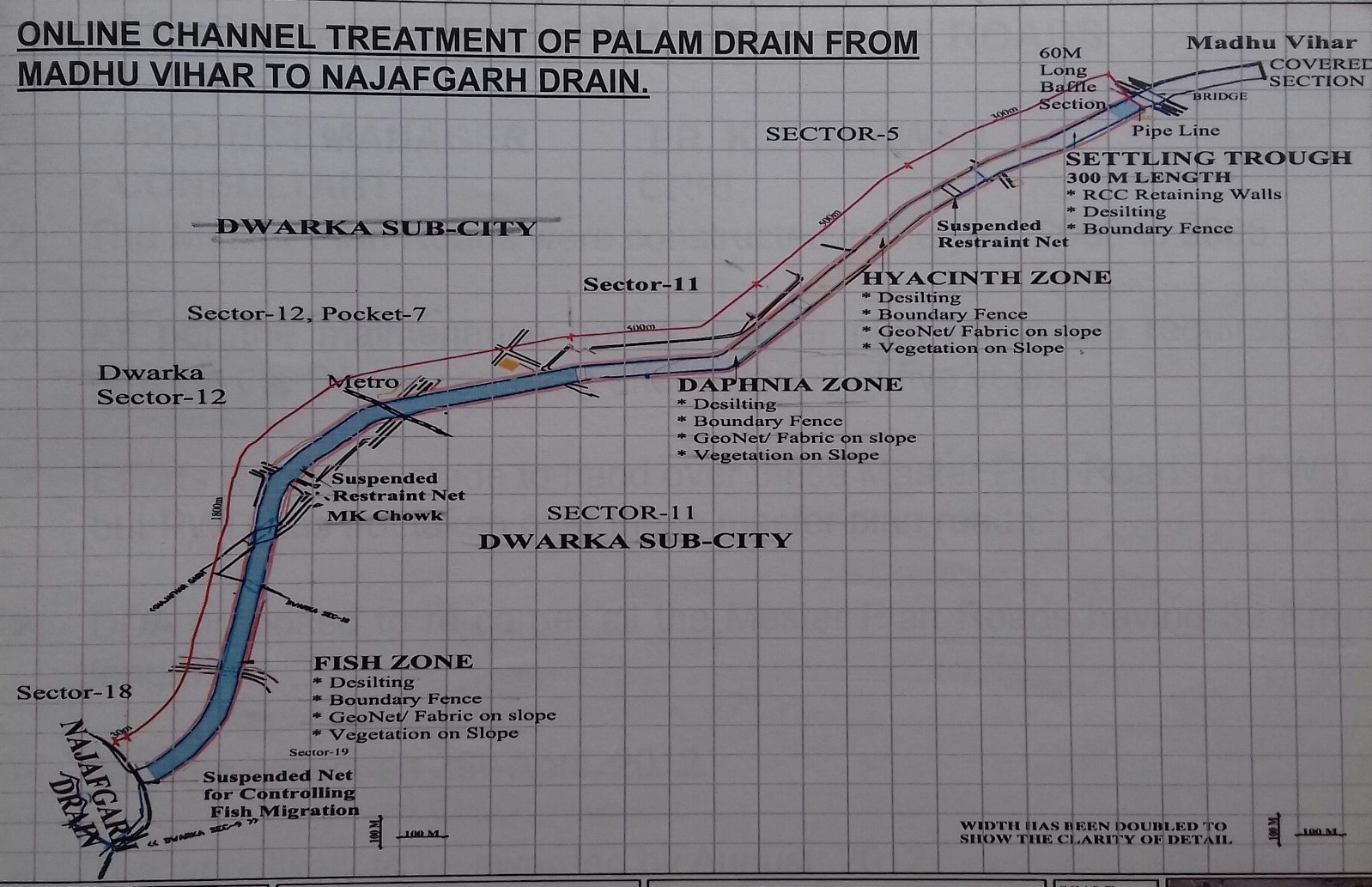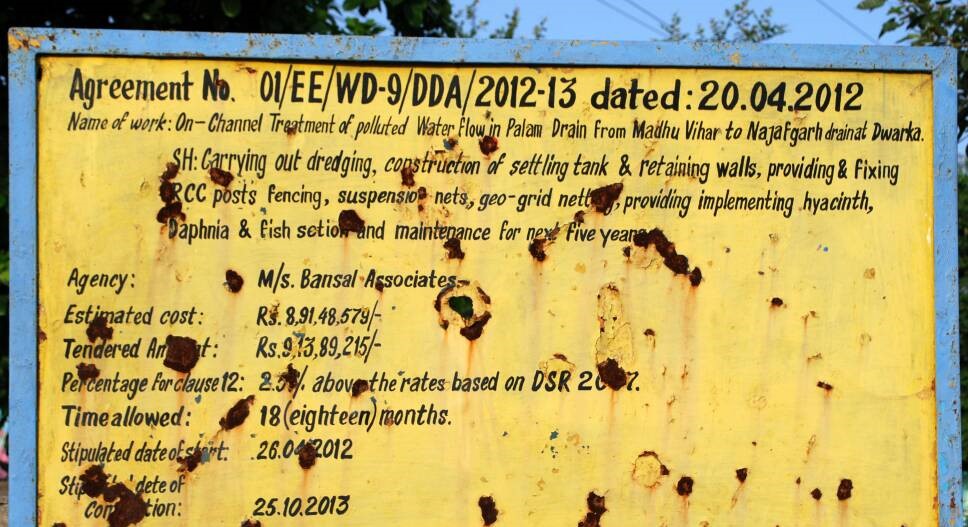They are now traceless! One was meant to treat the polluted water of the highly toxic Palam drain and the other to change the treated water into potable water, but both have gone cold.
 Palam drain
Palam drain
One of DDA’s innovative projects, on-channel treatment of polluted water of Palam drain from Madhu Vihar to Najafgarh drain, seems to find no mention on DDA’s list of projects.
What happened?
The project was to use four bio-remediation techniques to improve water quality in the drain. It would include use of bacteria, sedimentation, fish and water plants to treat the polluted water. But, according to the sources, the project was dumped from the DDA’s list owing to its impracticality and unsuccessful output.
An official, on the condition of anonymity, said, “The project is completely closed. Actually the level of BOD (biochemical oxygen demand) in the drain is so high that the treatment was not a success. Also, the enzymes being supplied to the project were not made available in sufficient amounts. So, the DDA had to close it down.”
The drain, which passes through various sectors and societies, has badly impacted the lives of the residents living in its vicinity. It originates from Delhi Cantonment and passes through residential areas of Sagarpur, Raghu Nagar, Dabri, Sitapuri, Vijay Nagar, Mahavir Enclave, Madhu Vihar, Dwarka before ending in the Najafgarh Drain.

The plan for on-channel treatment
In Dwarka, the drain passes through sectors 3, 2, 5, 11, 12, 16, 18 and others — all residential areas.
According to DDA officials, the project was approved in 2007, and tendering was awarded in 2012 at an estimated cost of Rs 9.9 crore. The project took off, and even the treatment of water had begun. The DDA promoted the project in its press conferences and explained its innovative methods.
But the project lost steam mid-way, and now the officials are not even aware of what's become of the project.
The project was meant to clean four km of the drain, using bacteria and plants that would help in decreasing the BOD. The higher the BOD value, the greater is the amount of organic matter or “food” available for oxygen-consuming bacteria.
Different zones were set up for the treatment — settling zone, hyacinth zone, daphnia zone and fish zone. Additionally, the sides of the drain had to be beautified with ornamental plants and other varieties to restore biodiversity along the drain.
City Spidey spoke to SK Malik, an environmentalist who has been pursuing the matter with the DDA through letters and RTI.
He recalled, “In October 2012, the DDA announced that the highly polluted Palam drain was set to get a facelift. This drain has been a source of toxic stench in the densely populated areas of Dwarka. To improve air quality of this area, DDA, with help from conservation body INTACH (Indian National Trust for Art and Cultural Heritage), started the project. The cost was estimated at Rs 12 crore, with a recurring annual expense of Rs 3 crore. In 2012, the DDA awarded the contract for construction of resettlement tank at Rs 9 crore. The project continued for 2-3 years, but wasn’t deemed very effective.”
To know the status of the project, Malik filed an RTI, but got no answers. He said, “In March 2017, I filed an RTI to know the details about the feasibility report, the money spent, present status, improvement in water quality, use of treated water in gardens and lessons learnt by the DDA during the work — but the DDA gave no reply. I made an appeal and am still waiting to know how the public money was used by the DDA.”

A DDA board at the site
Another initiative prepared by IIT Bombay and finalised in 2014 by the DDA met the same fate.
Using soil bio-technology, the project was meant to create potable water from bio-remediated water — biologically treated with organisms to neutralise pollutants — of the Palam drain. This innovative technology was already being utilised by Bombay Municipal Corporation and several other places in Maharashtra.
The DDA was to implement the project jointly with IIT Bombay, INTACH and Vision Earthcare, a green technology firm.
A pilot project was to be implemented by January 2015 to deliver 5 MLD of potable water, equivalent to supply from 50 tubewells. The anticipated cost of the project was pegged at Rs 3.75 crore.
But none of the plans materialised.
Is the DDA really serious about solving the crisis, which has turned into a health hazard for residents living in the vicinity of the toxic drain?
In the words of Uma Shankar, former RWA secretary of Adarsh Apartments, “DDA officials told us that it would be treating the drain biologically to get rid of the foul and toxic smell. They said with a dip in BOD, the smell will also become less intense. They said they would plant ornamental varieties along the sides of the drain to beautify and also improve the oxygen levels of the nearby areas. What happened to all those plans?”
The citizens have a right to know!